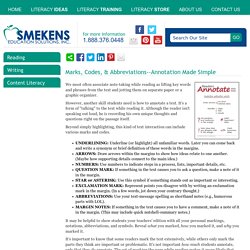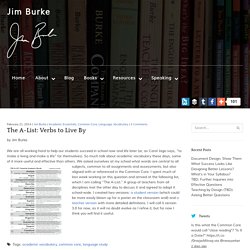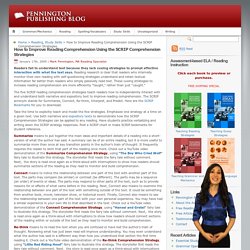

Literacy Day 1 Session C Reading Unravel. THIEVES Pre-Reading Strategy. iTeach. iCoach. iBlog.: Five close reading strategies to support the Common Core. I walked in to my first college class, Political Science 101, eager to learn.

For my inaugural college assignment, my professor asked the class to read the first three chapters of the textbook for the next class period. That night, I returned to my dorm room, determined to learn everything I could in those three chapters. I pulled out my textbook and highlighter. Growing up, that is what I always saw the “older kids” using when they read a textbook. In my naïve 18-year-old mind, I believed that highlighters must have some magical power that transports the words on the page directly to your brain. However, when I opened my textbook it was unlike anything I had read in high school.
I shrugged, pulled out my highlighter and started highlighting. Comprehension Strategies: Annotation Made Simple. We most often associate note-taking while reading as lifting key words and phrases from the text and jotting them on separate paper or a graphic organizer.

However, another skill students need is how to annotate a text. It's a form of "talking" to the text while reading it. Although the reader isn't speaking out loud, he is recording his own unique thoughts and questions right on the passage itself. Beyond simply highlighting, this kind of text interaction can include various marks and codes. UNDERLINING: Underline (or highlight) all unfamiliar words. It may be helpful to show students your teachers' edition with all your personal markings, notations, abbreviations, and symbols. It's important to know that some readers mark the text extensively, while others only mark the parts they think are important or problematic. TIP: If your students cannot write in the book, then have students track their thinking on sticky notes adhered to the text pages.
The A-List: Verbs to Live By. By Jim Burke We are all working hard to help our students succeed in school now and life later (or, as Carol Jago says, “to make a living and make a life” for themselves).

So much talk about academic vocabulary these days, some of it more useful and effective than others. We asked ourselves at my school what words are central to all subjects, common to all assignments and assessments, but also aligned with or referenced in the Common Core. I spent much of last week working on this question and arrived at the following list, which I am calling “The A-List.” Literacy Day 1 Session C Reading Unravel. Getactive. SQ3RSurvey. How to Improve Reading Comprehension Using the SCRIP Comprehension Strategies. Readers fail to understand text because they lack cueing strategies to prompt effective interaction with what the text says.

Reading research is clear that readers who internally monitor their own reading with self-questioning strategies understand and retain textual information far better than readers who simply passively read text. These cueing strategies to increase reading comprehension are more efficiently “taught,” rather than just “caught.” The five SCRIP reading comprehension strategies teach readers how to independently interact with and understand both narrative and expository text to improve reading comprehension. The SCRIP acronym stands for Summarize, Connect, Re-think, Interpret, and Predict. Here are the SCRIP Bookmarks for you to download. Take the time to explicitly teach and model the five strategies. Summarize means to put together the main ideas and important details of a reading into a short-version of what the author has said. Be Sociable, Share! Purposeful Annotation: A "Close Reading" Strategy that Makes Sense to My Students - Dave Stuart Jr.
Mmm… tortilla chip crumbs.

(It'll make sense later.) If you look at my original close reading post, you'll see I was basically using the phrase “close reading” to refer to annotation. It took me a year or more to realize that I was saying one buzzwordy thing to mean a lot of explicit, less confusing things that readers do when grappling with a text. I blame my error on allowing myself to get sucked into the unfortunate vortex that was the buzzwordification of close reading. If you’re new to the blog, though, keep in mind that while I do try not to take the educational establishment too terribly seriously (instead opting to occasionally poke fun at us), when it comes to helping students flourish in the long-term, I’m dead serious. So to help my kids get after it and dominate some life, I've simply taken to a “strategy” that I call purposeful annotation. The big idea is this: what we do when reading should align with Mmm… Dark and accurate — my favorite flavor of analogy. From Conley's book: